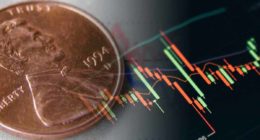Updated: August 3, 2021
Every now and then, a new trend emerges in the stock market that takes investors by surprise in a very profound way. Whether it was the first kidney transplant in 1952, discovering telomeres (important in the study of cancer) in the ’80s, DNA sequencing, developing the artificial limb, or the recent revolution in vaccine development, all of these milestones have contributed to the rampant evolution of the biotechnology industry itself.
What will become the next niche that could shape the face of the future for biotechnology? Many are calling for personalized medicine to fit that mold. And there’s nothing more personal than cancer.
According to the National Cancer Institute, cancer is among the leading causes of death worldwide. In 2018, there were 18.1 million new cases and 9.5 million cancer-related deaths worldwide.

The Institute estimates that in 2020, an estimated 1,806,590 new cancer cases will have been diagnosed in the United States, and 606,520 people will die from the disease. By 2040, the number of new cancer cases per year is expected to rise to 29.5 million, and cancer-related deaths to rise to 16.4 million.
There’s no secret pill to take that addresses all cancers right now. Clinical development is being conducted by countless companies looking to address one cancer type or another. But still, no one treatment has shown as much promise until a recent breakthrough in T-Cell therapy.
CAR-T (chimeric antigen receptor) has become the early cancer treatment disruptor. The biggest problem is that it is still very costly and cannot be easily adjusted and applied to multiple indications. Even with as the case, it’s the newest method for targeted treatment – for now.
GT Biopharma (NASDAQ: GTBP) Is Developing A Cancer Treatment Portfolio That Could Radically Disrupt The Immunotherapy Industry
Keep Reading Below And See How…
While the hot topic online might be coronavirus treatments or vaccine candidates, the bigger story is cancer stocks. The reason being has much more to do with the industry potential itself. While you’ve got your vaccine companies making attempts to produce a viable treatment, oncology companies are all about M&A. This alone has become a driving force to mounting interest in immunotherapy names.
How Big Have M&A Deals Been?
- Global pharmaceutical company Servier acquired Agios Pharmaceuticals’ oncology business, including its commercial, clinical, and research-stage oncology portfolio, for up to $2 billion
- Merck (NYSE: MRK) bought cancer drug research company VelosBio Inc. from Pappas Capital and other investors for $2.75 billion.
- Last September, Gilead Sciences (NASDAQ: GILD) acquired Immunomedics for a cool $21 billion to gain access to a breast cancer treatment, Trodelvy.
Remember that these are just a few of the larger, more recent deals in the oncology space. As a result of these massive deals, however, investors are now looking for new opportunities and novel treatment platforms.
The Real Opportunity Is Bigger Than T-Cell Treatment
This was touched on briefly but should be expanded on. T-Cell ad CAR-T treatment platforms have taken some of the early spotlights in “new” cancer treatments. Calling it “a historic action,” the FDA approved the first CAR-T cell therapy—Novartis’ Kymriahin 2017, “ushering in a new approach to the treatment of cancer and other serious and life-threatening diseases.”
The downside to the therapy is that patients who receive it are at risk for severe and potentially life-threatening side effects. Notable among them is cytokine release syndrome (CRS). This is a systemic response to the activation and proliferation of CAR-T cells, which can provoke high fever and severe flu-like symptoms (this will be important later in this report).
The other problem with CAR-T therapies is that they’re incredibly expensive. Considering there’s no guarantee that treatment is effective, patients are shelling out BIG money for a “novel therapy” that may not even address the underlying issue. How much are we talking about? Novartis will charge $475,000 for the one-time treatment.
While interest has been placed upon this type of therapy, it has its limitations. Aside from cost-effectiveness, it’s also limited in its broad potential applicability because it can require an individual approach that is time-consuming and may be challenging to apply at scale.
To this end, GT Biopharma (NASDAQ: GTBP) has identified a clear, unmet need for targeted treatment that is also designed as an “off-the-shelf” therapy used as a stand-alone and in combination with more traditional cancer therapy.
Ushering In The Next Generation Of Immunotherapy
Those who’re just getting exposure to cancer stocks right now may be familiar with things like CAR-T and traditional chemotherapy or radiation treatment. All of that may end up being thrown out the window in light of very recent and very favorable results that GT Biopharma (NASDAQ: GTBP) has reported.
What Is TriKE™ Therapy?
GT Biopharma (NASDAQ: GTBP) has focused its science on using “Natural Killer Cells” to fight cancer. The company’s specific type of therapy aims to increase the number of NK cells within the tumor’s own microenvironment to beef up tumor cell killing activity.
The company’s silver bullet to achieve this is through tri-specific natural killer engagers (TriKE™). This type of therapy combines proteins that bridge an immune cell and a tumor cell then drive tumor cell killing power to exponential levels. It has led to new first-in-human phase studies to treat leukemia.
But above, we talked about “off-the-shelf” cancer treatments. TriKE™ has also been evaluated in ovarian, breast, prostate, pancreatic ductal adenocarcinoma, and lung cancer models. GT Biopharma (NASDAQ: GTBP) found the treatment demonstrates a significant reduction in tumor burden in animal models. It also increased the overall survival in animal models of solid tumor cancers.
Study Results, Partnerships, & Expanded Trials
Over the last several months, GT Biopharma (NASDAQ: GTBP) has been in a very bright spotlight ahead of its recent NASDAQ uplisting & for good reasons. Starting with its lead treatment, GTB-3550, the company’s first TriKE™ candidate, is under development for treating acute myeloid leukemia (AML), myelodysplastic syndrome (MDS), and other types of CD33+ hematopoietic malignancies. This treatment is currently in Phase I/II clinical trials.
Right now, its open-label, dose-escalation Phase I portion of the trial evaluates GTB-3550 in patients with CD33-expressing, high-risk myelodysplastic syndromes, refractory/relapsed AML, or advanced systemic mastocytosis, and will determine safety and tolerability as well as the pharmacologically active dose, and maximum tolerated dose of GTB-3550.
Early Results Have Already Shown Promise
The trial process can be long and arduous for companies to go through. However, interim data sheds light on whether or not treatment has any potential. In this case, interim FDA data on GTB-3550 was an eyeopener.
Targeted delivery of IL-15 to NK cells via GTB-3550 TriKE™ therapy showed preferential proliferation of NK cells, significantly less effect on CD8+ T-cells, and no observed toxicity at 10x the previous reported maximum tolerated dose for continuous infusion of recombinant human IL-15.
Not only were no toxicities observed (remember the CRS issue I mentioned above with other treatments), but significant benefits were observed after treatment with GTB-3550 in the seven patients that have been enrolled & have also completed therapy:
- The first patient treated at 5 mcg/kg/day had stable disease after GTB-3550 therapy
- The first patient treated at 25 mcg/kg/day saw AML blast levels decrease from 18% to 12% after GTB-3550 therapy.
- Patient #7 was a high-risk MDS patient who had previously failed hypomethylating agent and Luspatercept therapies. After treatment with GTB-3550 at the highest dose in the group, 50mcg/kg/day achieved a bone marrow blast level reduction from 12% to 4.6% and stable hematologic parameters. This included normal platelet counts throughout therapy.
I know this may be over some readers’ heads, but it all boils down to GTB-3550 treatment leading to a potentially life-saving opportunity for this patient, specifically. Patient #7 met the criteria for a bone marrow transplant! To date, 12 patients have been enrolled in the Phase I/II Expansion clinical trial. Patients enrolled early in the Study (patients 1-4) were treated with doses of GTB-3550 below the anticipated therapeutic dose (RP2D) and maximum tolerated dose (MTD) to address possible safety concerns.
Patients 5-9 were treated with increasing doses of GTB-3550 (25mcg/kg/day, 50mcg/kg/day and 100mcg/kg/day, respectively).
Three of the five patients (60%) experienced a reduction in bone marrow blasts with two patients (one patient treated at the 50mcg/kg/day dose level and one patient treated at the 100mcg/kg/day dose level) experiencing significant reductions in bone marrow blast levels.
Patient 7 treated at the 50mcg/kg/day dose level achieved a 61.7% reduction in bone marrow blast levels from 12% before therapy to 4.6% after GTB-3550 therapy.
Patient 9 treated at the 100mcg/kg/day dose level achieved a 63.7% reduction in bone marrow blast levels from 22% before therapy to 8% after therapy.
Patient 11 began treatment dosed at 150mcg/kg/day and experienced 50% reduction in CD33+ AML/MDS bone marrow blast levels.
All patients treated at the lower doses exhibited no signs of toxicity and did not experience any Grade of CRS. Even at higher dose levels, all patients treated displayed no sign of any grade of cytokine release syndrome, which is a negative side effect that current platforms can trigger.
The current treatment of choice with curative potential for most elderly HR-MDS or relapsed/refractory AML patients is allogeneic hematopoietic stem cell transplant (HSCT). Since age is one of the most substantial risk factors associated with a poor outcome, the focus is on designing a better mousetrap of sorts. The significant gap between elderly patients in need of HSCT and those having it administered. This is due to failure to meet the eligibility requirements.
GTB-3550 represents a new, low-intensity therapeutic option that has now clearly shown the potential to increase HSCT eligibility for elderly HR-MDS and relapsed/refractory AML patients.
Additional results show GTB-3550 TriKE™ monotherapy is able to rescue the patient’s otherwise exhausted/inhibited/non-functional endogenous NK cell population and target direct killing of the patient’s AML and MDS cancer cells without the need for the co-administration addition of supplemental progenitor-derived or autologous/allogenic engineered NK cells.
New Potential Through Cytovance Partnership
GT Biopharma (NASDAQ: GTBP) announced a partnership agreement with Cytovance® Biologics, a USA-based contract development and manufacturing organization. Cytovance will be the exclusive GMP manufacture for three of GT’s TriKE™ therapeutic product candidates under the terms of the partnership agreement. Cytovance will manufacture TriKE™ using its proprietary Keystone® bacterial or mammalian expression systems.

We discussed the limited potential of a CAR-T treatment being produced at scale. The agreement with Cytovance, paired with GT Biopharma (NASDAQ: GTBP) off-the-shelf treatment platform, could offer an immediate solution.
However, this partnership doesn’t only cover GTB-3550; it covers the manufacture of all TriKEs™. Among other things, this now gives GT Biopharma (NASDAQ: GTBP) the unique ability to scale and expand on additional clinical trials rapidly.
Looking Beyond AML
Of course, the early successes with GTB-3550 in AML and MDS are evidence that this isn’t just another immunotherapy. But there’s more than just AML that GT Biopharma (NASDAQ: GTBP) is targeting.
The company has further expanded on the applications of TriKE™. Findings presented show TriKE targeting a B7H3 protein, which indicated that a B7H3-targeted TriKE™ “has the potential to enhance NK cell immunotherapy in solid tumor settings and supports its further clinical development.”
GT Biopharma (NASDAQ: GTBP) has also filed US and international patent applications and initiated clinical development of TriKE™ therapy (GTB-6550) to treat HER2+, HER3+, and HER2+/HER3+ heterodimer complex breast and gastrointestinal cancers, which dramatically broadens the addressable market for the company’s TriKE™ platform.
Other candidates include:
GTB-4550 TRIKE™
GTB-4550 TriKE product candidate is being developed for the treatment of PD-L1+ solid tumor cancers. GTB-4550 is a single-chain, tri-specific scFv recombinant fusion protein conjugate composed of the variable regions of the heavy and light chains of anti-CD16 and anti-PDL1 antibodies and human IL-15.
GTB-5550 TRIKE™
GTB-5550 TriKE product candidate is being developed for the treatment of B7H3+ solid tumor cancers. GTB-5550 is a single-chain, tri-specific scFv recombinant fusion protein conjugate composed of the variable regions of the heavy and light chains of anti-CD16 and anti-B7H3 antibodies and human IL-15.
Combination TriKE Shows Promise
There’s no denying what drugs like Merk’s Keytruda, Novartis’ Kymriah, and Bristol-Myers Squibb’s (NYSE:BMY) Opdivo have done to build the foundation for mass adoption of immunotherapy. But the fact is, the next generation could bring in the golden age of cancer treatment. This not only includes monotherapies but combination treatments as well.
[Read More] Best Penny Stocks to Buy Now? 4 to Watch During Earnings Season
Other TriKE candidates from GT Biopharma have demonstrated efficacy in combination with other treatments. For instance, GT Biopharma’s B7H3 TriKE was combined with Fate Therapeutic’s (NASDAQ:FATE) FT538 iNK cells targeting tumor cells in prostate cancer. While FT538 alone showed a slight impact to cells in the model, the combination with GT’s TriKE demonstrated a complete eradication of cancer cells:

GT Biopharma’s CEO, Anthony Cataldo told PennyStocks.com, “GT Biopharma’s TriKE™ technology is a clear breakthrough in cancer treatment. Not only has it shown early success in hematologic diseases like acute myeloid leukemia, but the potential also demonstrated in combination with Fate’s FT538 iPSC NK cells opens up endless possibilities for the application of TriKE combination treatment in other potential drug therapy platforms targeting things like IL-15.”
How Big Of An Addressable Market Are We Talking About?
Let’s start with breast cancer. Breast cancer is the most commonly diagnosed cancer among American women. In 2021, it’s estimated that about 30% of newly diagnosed cancers in women will be breast cancers.*
About 1 in 8 US women (about 13%) will develop invasive breast cancer throughout their lifetime. In 2021, an estimated 281,550 new cases of invasive breast cancer are expected to be diagnosed in women in the US, along with 49,290 new non-invasive (in situ) breast cancer cases. Furthermore, roughly 43,600 women in the US are expected to die in 2021 from breast cancer.
Then, when you look at gastrointestinal cancers, it adds yet another more considerable market potential into the mix. Stomach cancer accounts for roughly 1.5% of all new cancers diagnosed in the US each year.* The American Cancer Society’s estimates for stomach cancer (also known as gastric cancer) in the United States for 2021 are about 26,560 new stomach cancer cases and just under 11,200 deaths from this type of cancer.
TriKE Pipeline Is Rapidly Advancing
GT Biopharma continues advancing its TriKE platform to address multiple cancer indications. While GTB-3550 is building steam, the company has already started expanding its pipeline. This time its ROR1 TriKE™ has begun investigations as a treatment candidate for prostate cancer.
The ROR1 TriKE™ was evaluated in several preclinical models of prostate cancer, and was found to be effective at promoting NK cell killing of multiple prostate cancer cells including.
Here’s why this matters: based on these early findings, the company is already seeing promise. So much so, GT Biopharma’s Chairman and Chief Executive Officer Anthony J. Cataldo emphasized that the company plans “to evaluate the ROR1 TriKE™ in additional IND-enabling preclinical studies with the goal of transitioning to a Phase I/II clinical trial.”
Now Analysts Are Getting Behind GT Biopharma
Roth, Buy, $25 Price Target

In consideration of these advancements, the market has shown excitement. But now it appears that analysts are following suit. In Q1, 2021 Roth Capital analyst Tony Butler initiated coverage on GT Biopharma. The rating? A Buy and A price target of $25 was also placed on this emerging biotech stock. (click here for full update)
“The company’s natural killer cell engagers may improve the outcomes in patients with acute myeloid leukemia and perhaps other malignancies…While additional higher doses are being tested to determine the maximum tolerated dose, GTB-3550 has not shown any demonstrative toxicity to date.”
B. Riley, Buy, Boosts $21 Price Target To $26
B. Riley analysts Justin Walsh and Mayank Mamtani state that “The longer you look, the better it gets.” This was in reference to GT Biopharma’s pipeline and lead treatment GTB-3550 TriKE™ (click here for the full analyst report). They “believe that the future and clinical development pathway for GTB-3550 will be clearer by the end of the summer, with multiple potential outcomes providing opportunities for investors to benefit.”

“Overall, we believe that GT Biopharma is well-positioned to benefit from and execute on Dr. Miller’s scientific vision of providing patients with safe, effective, and logistically feasible NK-cell based therapeutics. Notably, we see the potential for multiple near-term catalysts in the form of patient by patient data from GTB-3550’s dose escalation, which is currently at the second-highest dose planned.
We would not be surprised if at these higher doses additional blast count reductions are observed. If these reductions move patients into the normal blast count range (1-5%) and qualify as clinical responses, we believe GTBP could approach our $21 per share price target.
If, however, no additional anti-tumor activity is observed, we believe any resulting weakness in the stock would represent a buying opportunity as the asset moves into a Phase II trial well-designed to identify potential clinical efficacy. Consequently, we see considerable potential upside to current levels through the end of 2Q21 and into 3Q21 with limited risk to the downside.”
H.C. Wainwright, Buy, $25 Price Target
Analyst Robert Burns initiated coverage on the company with a Buy rating and announced $25 target on May 24th.
“The company has developed both TriKEs and tetra-specific NK cell engagers, or TetraKEs. These molecules aim to drive interactions between NK cells and tumor cells, forming an immune synapse between these two cell types and thereby inducing NK cell activation at that site. NK cells mediate antibody-dependent cell-mediated cytotoxicity (ADCC) through the highly potent CD16 activating receptor.

In our view, GT Biopharma’s proprietary product candidates have the potential to overcome certain limitations of CAR-T therapy, emerging cell-based immunotherapy approaches and other antibody therapies. Unlike full-length tri-specific antibodies, TriKEs and TetraKEs are small single-chain fusion proteins that bind the CD16 receptor of NK cells directly, inducing more potent and durable responses as seen in preclinical experiments.
These molecules also have superior biodistribution as a consequence of their smaller size, which may prove crucial in facilitating effective attacks on solid tumors that have historically been difficult to penetrate and in which CAR-T therapy has thus far failed to achieve meaningful results. In addition, TriKEs and TetraKEs are designed to be non-immunogenic, possess rapid clearance properties and can be engineered flexibly to target a variety of tumor antigens.”
GT Biopharma to be Added to the Russell 2000® Index
During the second quarter of 2021 GT Biopharma will be added to the famed Russell 2000 Index effective Juen 28, 2021. FTSE Russell determines membership for its Russell indexes primarily by objective, market-capitalization rankings and style attributes. Membership in the small-cap Russell 2000® Index, which remains in place for one year, is based on membership in the broad-market Russell 3000Ò Index.
“Our inclusion in the Russell index is an important milestone for us as it reflects the continued progress we are making to develop and commercialize our first-in-class therapeutics. We welcome the enhanced visibility of our long-term growth potential and look forward to sharing our future milestones with a broader investment community.”
Anthony J. Cataldo, GT Biopharma’s Chairman and Chief Executive Officer
Is GT Biopharma On The Verge Of An Immunotherapy Breakthrough?
This is something readers will need to decide for themselves. However, GT Biopharma (NASDAQ: GTBP) could present an interesting scenario in that each dose escalation level has been well-tolerated and delivered meaningful data so far. Furthermore, the company has also seen the potential that the TriKE™ platform has when targeting other indications. In light of this and anticipation of more clinical trials, GT Biopharma (NASDAQ: GTBP) has gone further in securing a manufacturing partner to meet the need for therapeutic product candidates in these trials.
As we know, however, the treatment side of things is only one piece of the biotech story. A seasoned leadership team plays a critical role in taking pipelines to the next stages of development, licensing, or even acquisition. GT Biopharma (NASDAQ: GTBP) has been built by some of the industry’s most experienced leaders:
Anthony J. Cataldo
Chairman, Chief Executive Officer & President
Mr. Cataldo founded GT Biopharma Inc. upon joining the Board of Directors and subsequently Chairman and CEO in July of 2014, where he changed the company’s profile with the inclusion of oncology assets. From February 2011 to June 2013, Mr. Cataldo served as Founder and Chairman/CEO of Iovance Biotherapeutics, Inc. (IOVA). Mr. Cataldo created the highly successful IOVA/Genesis with the inclusion of assets acquired from the National Cancer Institute to treat stage four melanoma. Mr. Cataldo has extensive experience in the biotechnology sector, having served as Chairman/CEO of several biotech companies, including: Calypte Biomedical Corporation and Senetek, PLC.
Jeffrey S. Miller, MD.
Consulting Chief Medical Officer
Jeffrey S. Miller, MD, received a Bachelor of Science degree from Northwestern University in Evanston, Illinois, and received his MD from Northwestern University School of Medicine. He completed an internship and residency in Internal Medicine at the University of Iowa in Iowa City. After completing a post-doctoral fellowship in Hematology, Oncology, and Transplantation at the University of Minnesota, he joined the faculty in 1991. Dr. Miller is currently a Professor of Medicine at the University of Minnesota. He is the Deputy Director of the University of Minnesota Masonic Comprehensive Cancer Center. Miller has more than 20 years of experience studying the biology of NK cells and other immune effector cells and their use in clinical immunotherapy with over 170 peer-reviewed publications. He is a member of numerous societies such as the American Society of Hematology, the American Association of Immunologists, a member of the American Society of Clinical Investigation since 1999. He serves on the editorial board for Blood and is a reviewer for a number of journals and NIH grants. Dr. Miller has supervised over 400 NK cell products and sponsored more than 10 investigational new drug applications.
Dr. Miller & GT Biopharma have also signed a sponsored research agreement (SRA). This SRA focuses on the further clinical development of GT’s TriKE product candidates. GT Biopharma has early termination rights without financial penalty, and will receive an exclusive worldwide license to any patentable inventions which arise under the SRA.
Download
GT Biopharma (NASDAQ: GTBP)
Corporate Presentation
7 Key Highlights To Note With GT Biopharma (NASDAQ: GTBP)
- Earlier findings in its GTB-3550 TriKE™ Phase I/II clinical trial have already shown favorable results with desirable outcomes in one of its patients.
- GT Biopharma (NASDAQ: GTBP)‘s leadership is deeply rooted in the biotech industry, with a clear history of achievements in building industry-leading organizations.
- GT Biopharma (NASDAQ: GTBP)‘s uplisting to the NASDAQ brings a new market opportunity & levels the playing field between it and other immunotherapy companies.
- GT Biopharma (NASDAQ: GTBP)‘s pipeline has just begun showing promise in other indications such as GI and breast cancers, with early trials being initiated and US & international patent applications being filed.
- GT Biopharma (NASDAQ: GTBP)‘s treatment platform has shown superior results compared to current clinical treatments as a flood of multi-billion-dollar oncology company M&A has investors looking for the next big opportunity within the space.
- GT Biopharma (NASDAQ: GTBP) has also begun advancing other treatments based on its TriKE treatment platform. Its prostate drug candidate, ROR1 TriKE™, has shown enough potential that management has already sought out IND-enabling preclinical studies with the goal of transitioning to a Phase I/II clinical trial.
- Aside from the progress that GT Biopharma (NASDAQ: GTBP) has made, analysts are now getting behind the stock with Roth Capital, B. Riley, & H.C. Wainwright all giving Buy ratings & price targets between $25 and $26 right now.

*End Notes:
https://hms.harvard.edu/about-hms/history-hms/timeline-discovery
https://www.cancer.gov/about-cancer/understanding/statistics
https://www.themiddlemarket.com/news/merck-bolsters-oncology-portfolio-with-another-acquisition
https://www.breastcancer.org/symptoms/understand_bc/statistics
https://www.cancer.org/cancer/stomach-cancer/about/key-statistics.html
Disclaimer:
Pursuant to an agreement between Midam Ventures LLC and GT Biopharma (GTBP) Midam has been paid $150,000 for a period from March 1, 2021, to April 1, 2021. This compensation is payment 1 of 12 as part of a 12-month agreement between Midam Ventures LLC & GT Biopharma (GTBP), for a period from March 1, 2021, to February 28, 2022. Midam Ventures LLC expects to be paid $150,000 per month for a total of 12 months by GT Biopharma (GTBP). Midam has been paid an additional $150,000 for a period from April 2, 2021, to May 1, 2021. This compensation is payment 2 of 12 as part of the Agreement. Midam has been paid an additional $150,000 for a period from May 2, 2021, to June 1, 2021. This compensation is payment 3 of 12 as part of the Agreement. Midam has been paid an additional $150,000 for a period from June 2, 2021, to July 1, 2021. This compensation is payment 4 of 12 as part of the Agreement. Midam has been paid an additional $200,000 for a period from July 2, 2021, to July 29, 2021. This compensation is payment 5 of 12 as part of the Agreement. Midam has been paid an additional $200,000 for a period from July 29, 2021, to September 2, 2021. This compensation is payment 6 of 12 as part of the Agreement. We may buy or sell additional shares of GT Biopharma (GTBP) in the open market at any time, including before, during, or after the Website and Information, to provide public dissemination of favorable Information about GT Biopharma (GTBP). Click here for full disclaimer.








